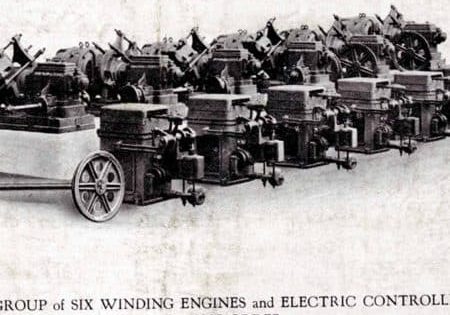Are these the most vital 94 questions for owners/managers?
Someone once said something along the lines of “Leadership isn’t about having all the answers; it’s about having the best questions.” So, pondering on this a bit recently, I decided to carve up a company into different silos and think about what good (and tough) questions might be for each of the silos.
There are some great models available around which to build my question set, one of the best to my mind being the old (not current) Business Excellence Model. There is also our own cut-down model of “better strategies, better systems, better measurement and engaged people delivering better results.” But that’s really a sales tool rather than a comprehensive framework for a list of tough questions. So, my own — pretty arbitrary — appointed silos are:
- Leadership and strategy
- People and culture
- Marketing and sales
- Operations and delivery
- Technology, innovation and improvement
- Finance and accounts
- Key business results
One final point before we get into detail is that, given this is a short piece, we can actually only scratch the surface of all the questions we could possibly ask. Putting that to one side, along with the fact that business is much more than just a set of silos, let’s look at each in a bit more detail.
Leadership and Strategy
Leadership is really about defining your company’s purpose, mission and vision and then inspiring your people so they are aligned with your goals and the values and behaviours necessary to deliver on them. For an individual, leadership is also a process: If you don’t believe me, check out Simon Sinek’s 5-min video on the subject.
Strategy is about the effective allocation of scarce resources in order to be able to create sustainable competitive advantage and achieve your financial objectives. Strategy is about making decisions on what you should and, possibly more importantly, what you should not focus on.
Our coach Marco suggests strategy is about finding your “sweet spot,” where three components overlap:
- The place in the market that allows you to deliver your target margin
- The place in the market that is sufficiently large to allow growth
- The capabilities you have to exploit those areas — you’re going to be good at some things and less good at others.
So, strategy and your sweet spot are about finding customers where there is enough margin and volume and that ties in with the stuff that you’re good at. Hopefully obvious, but if you are a lift company based in the region you are probably not going to want to be quoting for Canary Wharf! But what’s often missed is the opposite is also true; if you are a national independent, you probably don’t want to be quoting for one-off far-flung hotels and property agents. So, once you’ve discovered your sweet spot you need to do everything to protect it. Decisions should be made on the basis of “Does it protect or bring us closer to our sweet spot?”
Once the strategy is defined, it’s then about developing an executable plan which is monitored and finessed (as events inevitably change) that allows your people to work together in order to achieve your goals, whilst at the same time, overcoming the turbulence of day-to-day business life.
| Leadership, culture & strategy | ☐ | Do we have a compelling purpose? | ☐ | How are we creating a culture of innovation? |
| ☐ | Are our mission, vision and values defined? | ☐ | How transparent are we? | |
| ☐ | Does the top team live the mission, vision, values and purpose? | ☐ | How well do we manage conflict? | |
| ☐ | Do we properly understand our sweet spot? | ☐ | How open is the top team to critical feedback? | |
| ☐ | Is our competitor analysis sufficiently rigorous? | ☐ | Does the strategy drive an actionable plan? | |
| ☐ | What differentiates us from our competition? | ☐ | Are actions sufficiently well monitored and corrected? | |
| ☐ | Could we be better at predicting external events that impact us? | ☐ | Do we have a clear, actionable plan? |
People and Culture
People management is about developing a culture where people know what the big goal is and then “get things done willingly, effectively and efficiently.”
Culture is the shared values, beliefs, attitudes and practices that characterise an organisation. It’s “the way we do things around here,” and is often an implicit set of values that define how the company operates, its ethos or its way of working. Culture is the organisation’s personality, which is shaped by the people, their behaviours and their interactions.
Professor John Seddon, an occupational psychologist by trade, who these days would describe himself as a “systems thinker,” now says that, if you get the systems right, you don’t need to work on getting the culture right. Interesting!
| People management | ☐ | Have we defined the culture we want? | ☐ | How well do we support staff well-being? |
| ☐ | How well do we check how new people fit our culture? | ☐ | Are we sufficiently aware of workplace stress? | |
| ☐ | Are jobs and responsibilities sufficiently well defined? | ☐ | How well do we manage transparent communications? | |
| ☐ | How are we making ourselves the employer of choice? | ☐ | How consistent are we in our internal messaging? | |
| ☐ | What percentage of our team are A players? | ☐ | Is our internal messaging consistent with our values? | |
| ☐ | What is our strategy for retaining A players? | ☐ | Have we planned for the loss of key personnel? | |
| ☐ | How well do we support and train people? | ☐ | Is there a robust succession / training and development plan? |
Marketing and Sales
I love the Brad Sugars quote: “Marketing is about buying customers.” The key question then becomes are you spending more than you make on buying new customers? A great way to look at things, I think.
Another great management thinker, the late great Peter Drucker, suggested that the job of marketing is to actually make sales redundant. What he meant by that is if you can get the customer coming to you, already primed to purchase, you don’t need a sales team.
If you do, sales is about the conversion of prospects into customers and securing orders and contracts.
Obviously, there are some Lift and Escalator Industry Association restrictions around marketing, but there is also a load of good stuff being done on social media by some firms … and just taking people for coffee (or a beer) now and then helps smooth the flow of new work.
There is an abundance of tools to help you with sales and marketing; Segmentation and the 4 Ps and 8 Ps of marketing, AIDA, the 5 ways, Ladder of Loyalty, Customer lifetime value, the Ansoff Grid and many others.
| Sales & marketing | ☐ | Do we properly understand our market? | ☐ | Are the sales and marketing plans scalable? |
| ☐ | Do we properly understand our industry? | ☐ | Are we obtaining positive ROI from all marketing channels? | |
| ☐ | Is there a marketing plan that aligns with the strategy? | ☐ | Do we know and understand customer acquisition cost? | |
| ☐ | Is there a sales plan that aligns with the marketing strategy? | ☐ | Do we know and understand customer lifetime value? | |
| ☐ | How well do we leverage different parts of the sales process? | ☐ | Do we regularly move clients up the ladder of loyalty? | |
| ☐ | Do we properly understand our target market? | ☐ | How well do we manage customer satisfaction? | |
| ☐ | Do we properly understand our ideal customer? | ☐ | What percentage of revenue is from new products? |
Operations and Delivery
Now, we are at the heart of the organisation. Operations and delivery are about delivering on the promise made by sales and marketing, getting stuff to the client at the right time, in the right way. It’s ensuring the inner workings of a business work as effectively and efficiently as possible. Effectiveness first, efficiency second. If what you are doing is not effective, it really doesn’t matter how efficient you are. Operations and delivery are about how your work works, and that might be significantly different for the three types of work undertaken by lift companies: Installation activities are different to service activities and repairs different again.
Operations and delivery are about streamlining processes, minimising waste and making assets sweat. There is cash out of the business at the beginning of the operational activities as new orders and new clients are won, and that cash only comes back into the organisation once the client has paid. The quicker and slicker you can make this cash-to-cash cycle the happier you, your financial director and your bank manager will be.
Again, there are a number of tools that can help improve the effectiveness and efficiency of these processes. The Core Activity Map, Operational KPIs, Ishikawa diagrams, process performance charts and others like TIMWOOD, SECAR and 5S.
| Operations & delivery | ☐ | Have we documented responsibilities for all processes? | ☐ | Is our infrastructure able to handle projected growth? |
| ☐ | Are all processes comprehensively documented? | ☐ | How are we increasing effectiveness and efficiency? | |
| ☐ | Are all processes aligned with effective KPIs? | ☐ | Do we know which processes most need improvement? | |
| ☐ | Have we automated wherever relevant? | ☐ | Have we minimised our environmental impact? | |
| ☐ | Have we properly optimised our supply chain? | ☐ | Is our health and safety record second to none? | |
| ☐ | How efficiently are products, services and processes delivered? | ☐ | Are all of our processes effectively monitored? | |
| ☐ | Do we always fulfil customer expectations? | ☐ | Are our operational systems and processes “best in class”? |
Technology, Innovation and Improvement
Technology, innovation and improvement are the holy trinity of components that help any business stay ahead of the competition in today’s fast-moving commercial environment.
Technology is now at the heart of most companies in one way or another, and exploiting it properly leads to better productivity and better bottom-line results.
Innovation is just a fancy way of saying there is a better, slicker, quicker way of doing something. Innovation might apply to the way you set out and manage contracts, all of your internal processes, as well as how you deliver your products and services.
Improvement, both continual or breakthrough, requires the systematic examination of your processes so technology, innovation and improvement can be leveraged to deliver effective change.
Tools that can help include process performance charts, SPC and quantifiable improvement, as well as the thinking of people like Deming, Joiner and Shewhart.
| Technology & innovation | ☐ | Are we at the forefront of sector innovations and technologies? | ☐ | How robust is our methodology for continual improvement? |
| ☐ | Are we early adopters, followers or laggards? | ☐ | Are all premises, facilities and equipment legally compliant? | |
| ☐ | How well can we defend ourselves against cybersecurity threats? | ☐ | Are we setting industry standards for ESG and ethical conduct? | |
| ☐ | Do we have a robust business continuity/ disaster recovery plan? | ☐ | How are we becoming more sustainable? | |
| ☐ | Do we openly discuss mistakes and learn from failures? | ☐ | What is our approach to Net Zero? | |
| ☐ | How compliant are we with GDPR? | ☐ | Are all our business licences and permits in date? | |
| ☐ | How compliant are we with legislation? | ☐ | Are our technology, innovation and improvement processes “best in class”? |
Accounts and Finance
There is another great phrase along the lines of “Data is not information, information is not knowledge and knowledge is not wisdom.” I think this nicely encapsulates the difference between accounts and finance.
The accounts activities normally refer to the nuts and bolts of the recording and tracking of financial transactions.
Finance, on the other hand, refers more to the analysis of data and the creation of financial ratios and analysis with which to add insight to the information gained.
One of my first financial directors, Richard (I can picture the guy but can’t remember his second name) used to refer to the idea of “PIG accounting” where PIG stood for “Profit is God.” The other, perhaps more well known, adage that sits well here is “Profit is sanity, turnover vanity.”
| Finance & accounts | ☐ | Do we know where we lose money? | ☐ | How many days would it take to run out of cash? |
| ☐ | Do we know where we make money? | ☐ | Do we regularly review all key financial statements and ratios? | |
| ☐ | Are we maximising margins without compromising quality? | ☐ | Do we regularly review cash flow forecasts and statements? | |
| ☐ | Are we audit ready anytime? | ☐ | Do we use financial ratios to drive business decisions? | |
| ☐ | Are budgets set and reviewed religiously? | ☐ | Do we know our cash gap? | |
| ☐ | What is our cash buffer? | ☐ | How well do we manage aged debtors? | |
| ☐ | How prepared are we for unforeseen crises? | ☐ | Are our accounts and finance processes “best in class”? |
Key Business Results
Obviously, profit, turnover and growth are probably the three most important business results.
But they are all outcomes of really doing the right things properly in the first instance. You need good leadership and the right strategy. You need a market sufficiently large for you to grow. You need to talk to the right companies. You need the capability to undertake your work effectively and efficiently. You need to apply technology innovation and improvement, and you need to manage your cash.
You also need a framework that pulls together all of your business results for each of the different operational activities (installation, service and repair), as each will have different metrics and different levers on which you can pull. In our view, most companies don’t have this “single source of truth” from which discussions can be had and decisions can be made. This is why we have deliberately included a separate section for pulling together all this information which we have called key business results.
| Key business results | ☐ | Do we have a robust performance dashboard? | ☐ | Do we have time to think about, investigate and resolve issues? |
| ☐ | Do we understand when data needs to be investigated? | ☐ | Do organisational KPIs link to processes in a coherent way? | |
| ☐ | Do we regularly review all the data? | ☐ | Does our data set reveal the linkages between processes? | |
| ☐ | Do we effectively dig into data to take the right action? | ☐ | Do we present data so we can separate “signals” from “noise”? | |
| ☐ | Is all data recorded correctly and on time? | ☐ | Is the way we manage and present data “best in class?” |
Conclusion
These are obviously arbitrary silos of my own construction, and there is a crossover between many of the silos, which I think only goes to show that business does not operate as a set of silos. There is an interconnectedness of the activities that need to be undertaken to effectively run a company, especially a lift company, as they are, in fact (usually), effectively, at least two activities, often three: installation, service and repair.
Additionally, as a result, lift companies are not as linear as this picture perhaps presents, but in order to drive change or improvement, you need a structure on which to hang things. The alternative would be like wrestling with jelly.
As noted at the beginning, these questions are only a starting point. If you want to go further, I’d suggest looking at the Business Excellence Model, which assigns scores to a whole range of business activities, and if you look at how the model assigns scores, customer satisfaction gets 20% of the marks and people management and people results get 9% each — so a total of 18% —and business results gets 15%. At Statius, we’ve always believed that happy staff make for happy customers and happy customers come back, thereby delivering better business results. A view that is, at least anecdotally, reflected in the models scoring methodology!
Having said that, what we have here, we think, (you might have a different view) is a good first approximation for a decent discussion. If you want to go further and really get into some tough questions, we would be very happy to interrogate you!
Get more of Elevator World. Sign up for our free e-newsletter.










